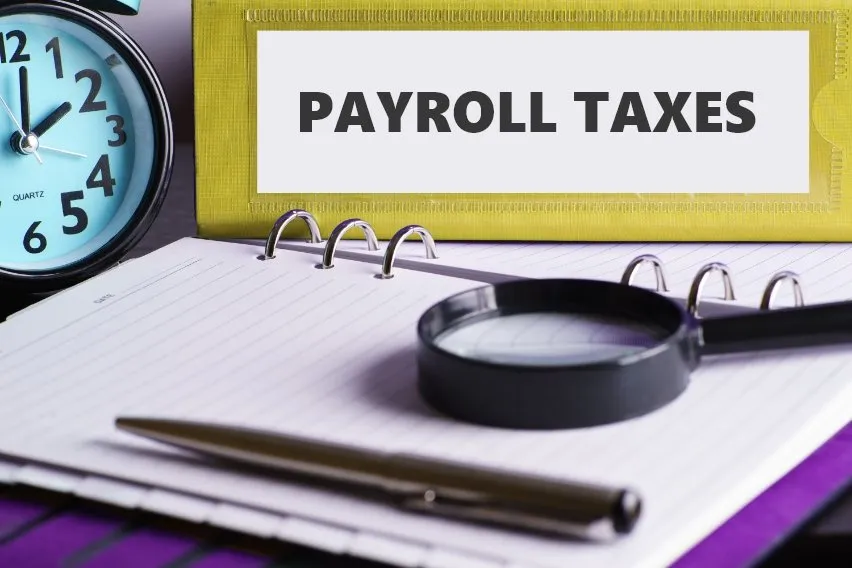Payroll Accounting: Definition, Importance & Setup Process
Payroll accounting is one of the best systems you can implement to be a better business owner. Not only does it keep your books in order, but it can also be a significant time- and nerve-saver when automated.

It may seem like there’s a lot of work involved, but it’s not as complex as it sounds. Here’s everything you need to know about payroll accounting, why it’s important, and how you can set it up.
Table of Contents
Why Is Payroll Accounting Important?
Expenses That Fall Under Payroll Accounting
How to Set Up Payroll Accounting
How Accounting Software Can Help You With Payroll
Examples of Payroll Accounting
What Is Payroll Accounting?
Payroll accounting helps business owners track their payroll-related business expenses. It includes all aspects of paying and calculating employee compensation. It also covers withholding payments to third parties.
The primary purpose of payroll accounting is to document expenses related to all compensation types. Also, it’s crucial for timely employee payments.

Why Is Payroll Accounting Important?
Payroll accounting is important for many reasons.
First, a proper payroll accounting system will make sure you keep track of your payroll expenses and comply with laws at the same time. This helps you avoid breaking tax rules. Only when you’re sure you’re in line with local, federal, and state laws can you truly have peace of mind running your business.
Second, payroll accounting provides an accurate and objective view of the overall employee cost. You will have an easier time understanding the incremental cost of your new employees.
Payroll accounting helps you determine whether to hire contractors, full-time employees, or part-timers. In short, your workforce will be much better organized.
Expenses That Fall Under Payroll Accounting
Here’s what an average payroll chart of accounts list contains:
- Gross wage expenses
- Health insurance expenses
- 401k matching expenses
- Federal taxes withheld
- State taxes withheld
- FICA taxes
- SUTA payables
- State disability payables
- Employee compensation
- Employee health insurance payable
- 401k employee compensation
- Accrued wages
How to Set Up Payroll Accounting
Payroll accounting doesn’t have to be complicated. Half of the steps require no more than research and submitting all the relevant forms.
Here’s an overview of the steps required to start payroll accounting:
- Get a federal Employer Identification Number
- Research the local, state, and federal requirements
- Set up pay periods
- Hand the employees W-4 and I-9 forms
- Do the calculations and pay taxes
Federal Employer Identification Number (EIN)
The first step is to get an EIN. You can think of it as a social security number for your business. Ideally, you want to apply for it before opening your business.
You’ll also want to check about local, state, and federal requirements regarding:
- Local income taxes
- State income taxes
- Federal income taxes
- Medicare taxes
- Federal unemployment taxes
- Social security taxes
Payment Type and Periodicity
The next step is to determine the payment type and pay periods.
You can pay your employees’ wages weekly, biweekly or semimonthly, or monthly.
Some businesses find it more convenient to pay employees daily, and others pay wages every 2 months. This part will mostly depend on the type of business and the agreements in place with your employees.
Employees’ Benefits and Insurance
Fringe benefits for employees include health and dental insurance, vacations, and sick days. Also included are paid holidays, savings plans, pension plans, and worker compensation insurance. You must include all these elements to make your payroll system more comprehensive.
Employees’ Forms
All businesses must have their employees fill out 2 forms with the IRS:
- I-9
- W-4
The I-9 proves that the employee is a U.S. citizen and is legally entitled to work in the country.
The W-4 form has all the information regarding tax calculations for every employee.
The Calculations
You have to calculate the amount of taxes withheld from your employee’s gross pay. IRS tax tables can help with that.
You’ll also have to take away other deductions like medical and life insurance, union dues, and garnishments.
Finally, don’t forget to deduct the manual payments to employees if you’ve already made them. The remainder will be the net pay for your employees.
How Accounting Software Can Help You With Payroll
Accounting software is a tremendous help with payroll accounting. With the aid of software, you can automatically generate pay stubs and deposit salaries. You can also calculate the remunerations and deductions for employees, create tax forms, and more.
Accounting software is a huge time saver. It eliminates the need for manual payments, calculations, and errors. With proper accounting software, you can have a more accurate picture of your payroll expenses and transactions and you can integrate that info with other financial programs.
Examples of Payroll Accounting
Understanding how payroll accounting functions for small business owners can take time. You can make it happen as long as you have patience and are willing to learn.
To help paint a picture, we’ll share 3 examples of accounting journal entries. Here they are:
Journal Entries – 1st Example
Imagine there’s only a single employee in your payroll system. In the first entry, you have the gross wages, deductions, payroll taxes withheld, and net pay. That entry will include the following:
- Gross wages
- Federal income taxes
- State income taxes
- Employee FICA taxes
- Employee health insurance
- Payroll payable (net wages of the employee)
The gross wages are an expense. The rest are the liabilities that you want to credit.
In all entries, the debits need to equal the credits. If that’s not the case, you need to double-check the totals and locate the accounting mistakes.
Journal Entries – 2nd Example
You make a second journal entry after giving the employee the paycheck. Once you do so, you won’t owe wages, and your liabilities will decrease. The cash will also decrease because you allocated a sum to the employee.
You want to decrease the payroll payable account with a debit and the cash account with a credit. The former is a liability and the second an asset.

Journal Entries – 3rd Example
At some point, you’ll have to pay employer taxes. You’ll also need to remit the withheld taxes. You can use the third journal entry for that.
Reverse your payable entries with a debit and decrease the Cash account with a credit.
You’ll have to remit the exact amount you credited your cash account with for state and federal taxes.
Key Takeaways
Payroll accounting doesn’t have to be a nerve-wracking task. Even though there are plenty of assets and liabilities you need to track, the process can be relatively simple.
You can record your payroll system’s transactions, income, and expenses using reliable accounting software. And as long as you do everything according to the law and on time, your whole accounting system will thrive in no time.
FAQs on Payroll Accounting
Is Payroll an Asset or Liability?
Payroll is a liability, as are all expenses related to it like wages payable, salaries payable, or accrued wages payable.
What’s a Payroll Accountant?
Payroll accountants prepare, generate, and maintain payroll documentation. They issue and process employees’ pay, commissions, or benefits. They also ensure all the information adheres to local, state, and federal guidelines and policies.
What Are Examples of Payroll Liabilities?
Payroll liabilities relate to expenses a business owes but hasn’t yet paid. This includes employee wages and employer’s Social Security taxes. It also includes Medicare taxes, withholdings, health insurance premiums, and more.
RELATED ARTICLES


 What is a Payroll Card & How Do They Work?
What is a Payroll Card & How Do They Work? Back Pay: Definition, Process & Best Practices
Back Pay: Definition, Process & Best Practices Payroll Taxes: What Are They & How to Calculate Them
Payroll Taxes: What Are They & How to Calculate Them How To Pay Independent Contractors In 2025
How To Pay Independent Contractors In 2025